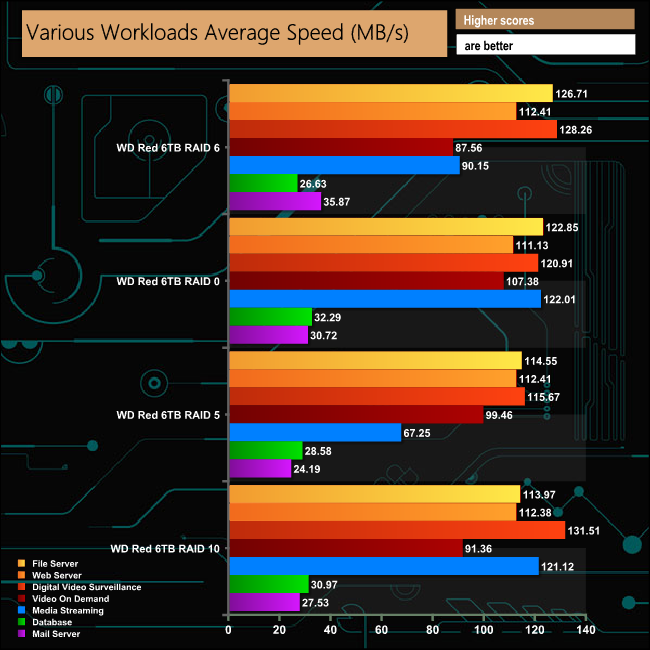We tested theTS-431XeU with a number of scenario’s that it may face in the real world. The settings for these scenarios are as follows.
File Server
512MB file size, 16KB Block size, 80% Read 20% Write, 100% Random, I/O queue depth 128.
Web Server
1GB file size, 16KB Block size, 100% Read 0% Write, 100% Random, I/O queue depth 64.
Database
2GB file size, 4KB Block size, 90% Read 10% Write, 90% Random 10% Sequential, I/O depth 128.
Media Streaming
64KB file size, 4KB Block size, 98% Read 2% Write, 100% Sequential, I/O depth 64.
Mail Server
32KB file size, 4KB Block size, 52% Read 48% Write, 95% Random 5% Sequential, I/O depth 64.
Video On Demand
128KB file size, 4KB Block Size, 100% Write, 100% Random, I/O depth 512.
Digital Video Surveillance
512KB file size, 4KB Block Size, Read 90% Write 10%, 100% Sequential, I/O depth 64.

In contrast to some of the other tests, it's RAID 6 where the NAS performs the best for the most part. The NAS was faster when in a RAID 6 array in the File, Web and Mail Server roles while the RAID 0 brought out the fastest scores in the Videon On Demand, Media Streaming and Database tests. The best Digital Video Surveillance performance came when the drives where in a RAID 10 array.
 KitGuru KitGuru.net – Tech News | Hardware News | Hardware Reviews | IOS | Mobile | Gaming | Graphics Cards
KitGuru KitGuru.net – Tech News | Hardware News | Hardware Reviews | IOS | Mobile | Gaming | Graphics Cards


